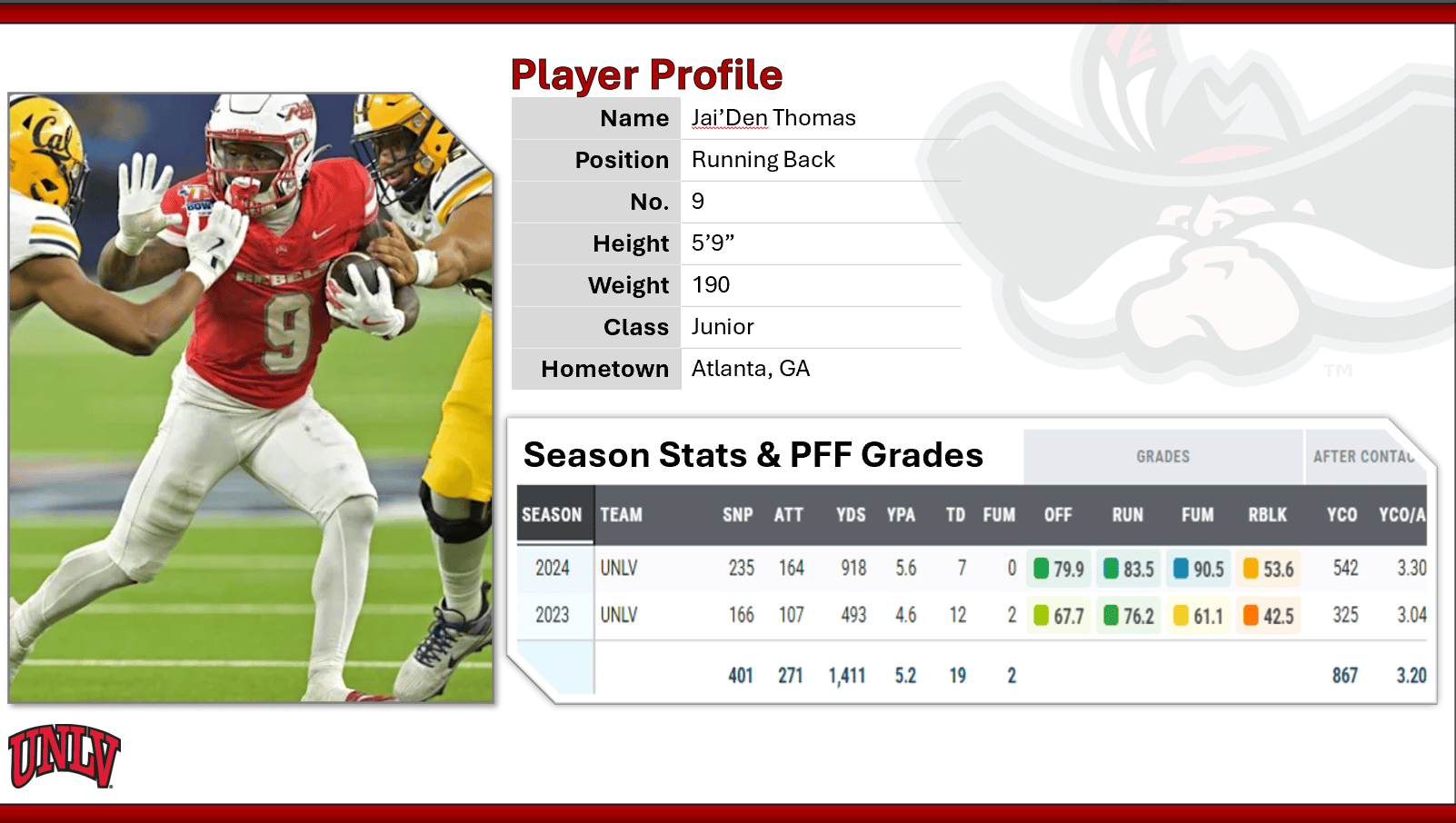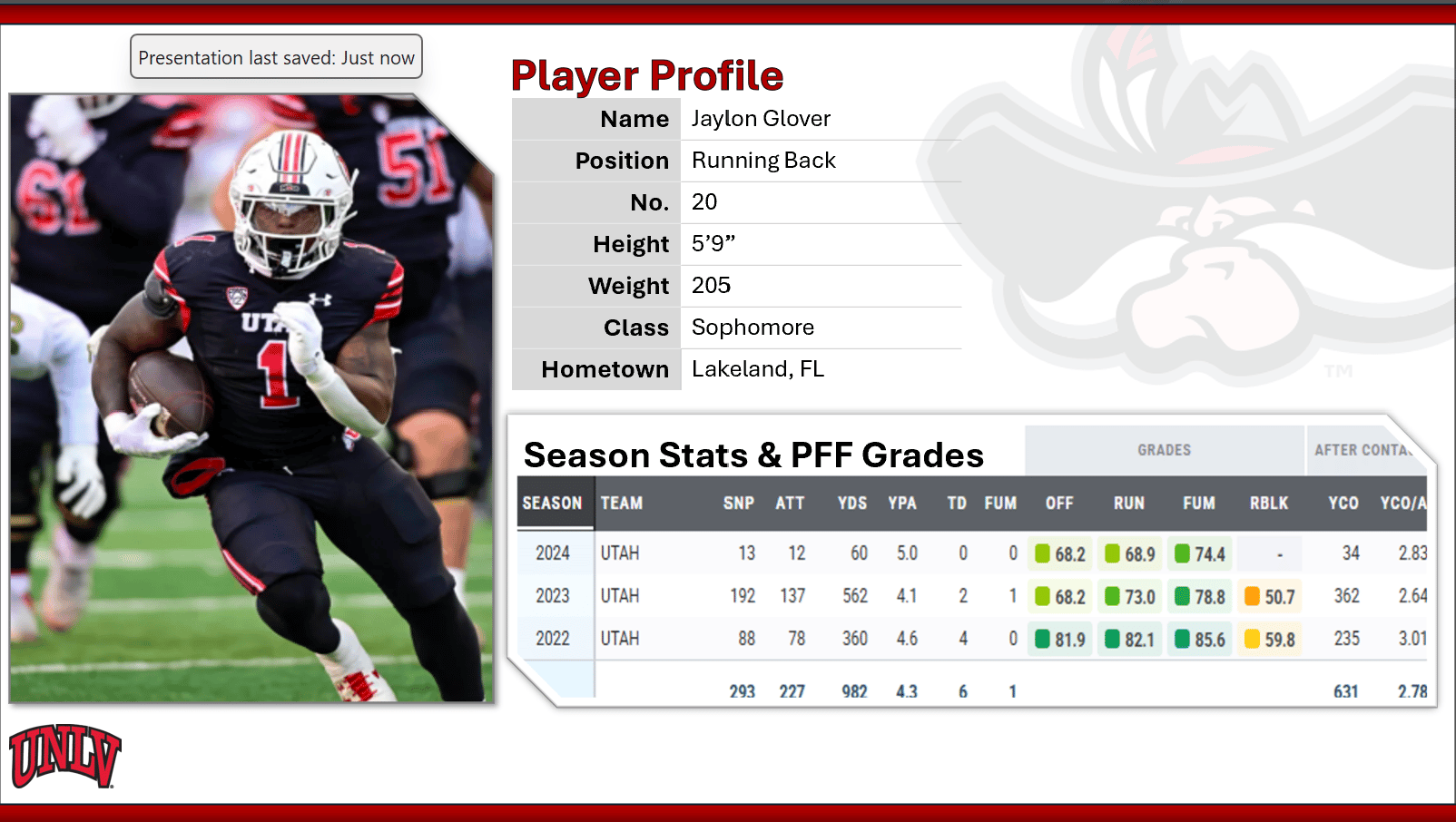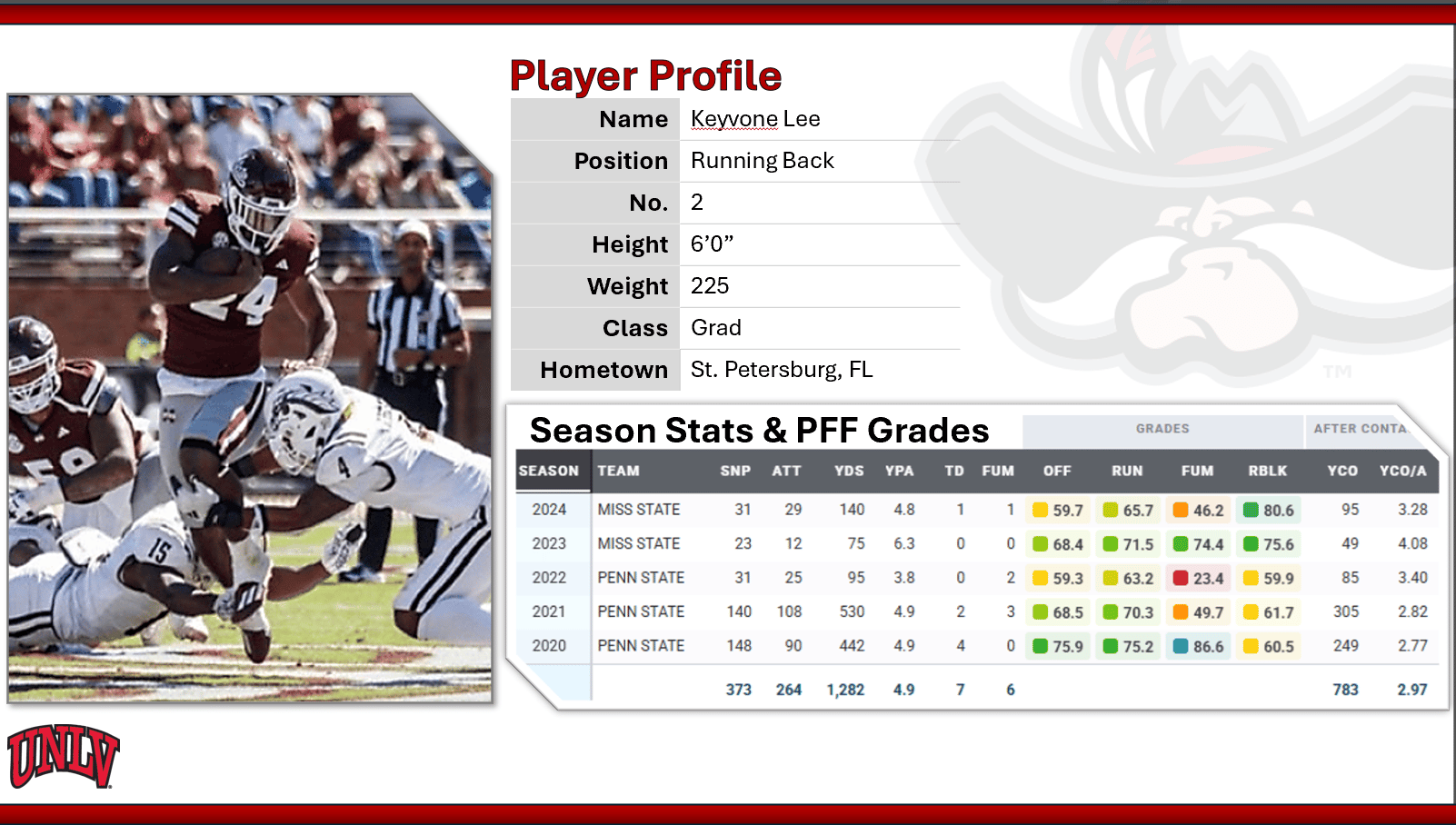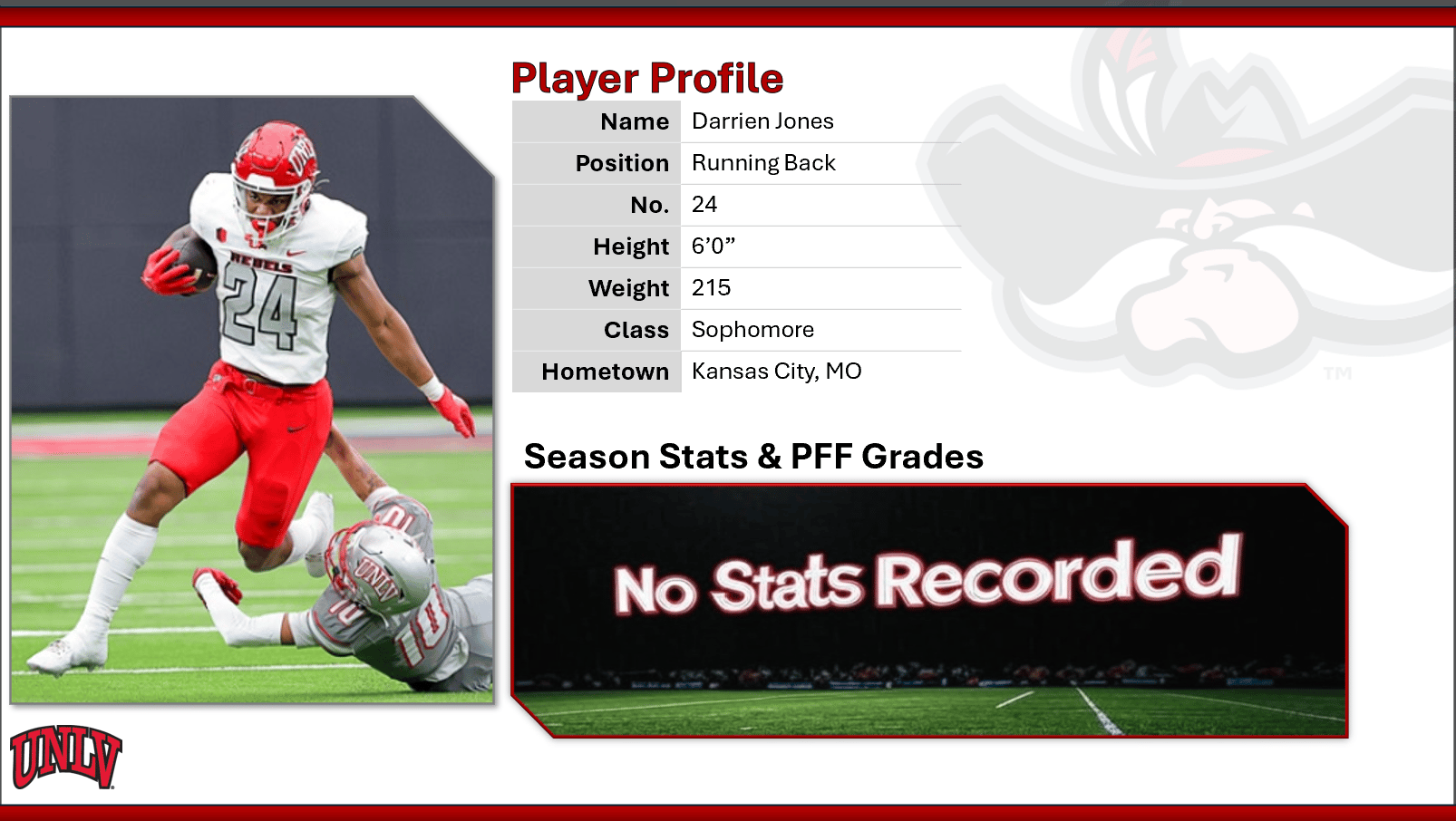Dan Mullen doesn’t run the ball to “establish it.” He runs it to control the math. Every time he lines up in the spread, he’s forcing a choice. Shift the safeties out wide, give up leverage inside. Crowd the box, get picked apart with RPOs. Pick your poison and watch the ground game go to work.

This isn’t theory. It’s what he did at Mississippi State. It’s what he brought to Florida. And now it’s what he’s installing at UNLV.
The idea is simple: spread the defense out, manipulate numbers, and punish mismatches. But to make it work, you need backs who can think fast, hit holes decisively, and hold up in a physical game. You need depth. You need buy-in.
UNLV has all three.
The Engine: Jai’Den Thomas

(Via - )
Thomas is the ideal anchor for this scheme. He’s not a bounce-it-outside runner; he’s a decisive, downhill back who wins between the tackles. His footwork is clean, his tempo controlled, and when Mullen dials up inside zone or option reads, Thomas rarely misreads the leverage. He presses the hole, makes one cut, and finishes forward.
And most importantly? He doesn’t flinch at the mesh point. In Mullen’s RPO-heavy system, that matters more than people think. The timing between quarterback and running back has to be exact; if it is off, the play collapses. Rush it, and the read is wasted. Thomas keeps it tight and smooth every time.
He nearly hit 1,000 yards last season in a completely different scheme. Now he’s the centerpiece of an offense designed around what he already does best.
Jaylon Glover: The Tempo Change

(Via - )
Glover brings juice, plain and simple. At 5’9” and 205, he’s compact, physical, and quick through the hole. There’s no wasted motion. He’s the kind of back you want running inside zone in a tempo set when the defense is still catching its breath.
He’s also battle-tested. Glover ran for nearly 900 yards in the Pac-12 and had his best game against Colorado. He’s used to speed. He’s used to physical fronts. And he’s used to operating behind good lines. That’s exactly the kind of background that translates into this system.
When Thomas needs a breather, Glover steps in without the playbook changing.
Keyvone Lee: The Closer

(Via - )
Mullen recruited Lee once already, back when he was at Florida. He knows what he’s getting: a 225-pound back who does the dirty work. Lee was a freshman starter at Penn State and later flashed at Mississippi State. Now he’s in a system that’s built for him.
He’s your closer. Your third-and-short answer. Your “we’re up 10 with six minutes left” sledgehammer. He won’t carry it 15 times a game, but he might win you the game when it matters.
And don’t overlook the pass protection. Mullen leans on his backs to block, especially in empty looks, where the QB has to trust the edge is secure. Lee doesn’t duck contact. He brings it.
Darrian Jones: The Surprise

(Via - )
Jones might not be a household name yet, but he’s earned the trust of the staff. He was one of the spring’s biggest risers, a thick, physical runner with a quick first step and a nose for daylight. He runs square, keeps a low pad level, and hits creases with urgency. He’s not a gimmick back. He’s depth with real function.
In this system, that matters. Mullen likes having four playable backs, and Jones looks like he’s on track to be one of them.
Kamran Williams: The Long Game

(Via - )
Williams is more of a future piece, but he’s worth stashing. The Texas product plays like he has something to prove, hard runs, physical contact, no fear. He may not crack the rotation yet, but if injuries hit, he’ll be ready. Mullen’s history suggests he’ll eventually find a role.
Built for the Mesh
Everything in Mullen’s run game starts at the mesh point, that moment of pause between the quarterback and running back, where the defense has to declare its hand. Blitz? Zone drop? Run fit? A misread by the QB or the back can blow it up. But if it clicks, it’s death by angles.
That’s why this group works. These aren’t just runners. They’re processors. They can read, react, and execute without busting the timing.
The Takeaway
This backfield is built with intent. Thomas is the steady hand. Glover is the tempo guy. Lee is the hammer. Jones gives you depth. Williams brings upside. Every one of them fits the system. Every one of them has a role.
And in a year where every drive matters, where Mullen needs total control of the game flow, this is the room that lets him do it.
You want to know how UNLV wins in 2025? Look behind the quarterback.
That’s where the machine starts.
Michael Cooper covers UNLV athletics, realignment strategy, and college sports finance for The Scarlet Standard. Subscribe for free to get every update as the 2025 season and beyond unfold in real time.